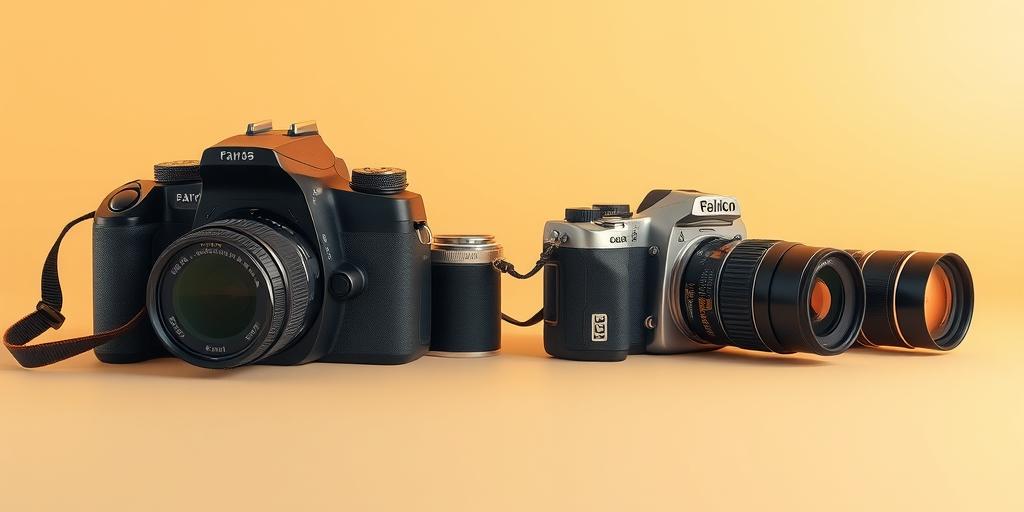Step right up and prepare for a blast from the past! Get ready to witness the fascinating evolution of early digital cameras – a journey that shaped modern photography as we know it. From clunky behemoths to the stylish compact models, we’ll uncover the surprising innovations and quirks that defined these groundbreaking devices, and how they paved the way for the smartphones that fill our pockets today. Prepare to be amazed by the history of early digital cameras!
The Dawn of the Digital Age: Early Adopters and Their Challenges
The early days of digital photography were, to put it mildly, challenging. Forget the sleek designs and intuitive interfaces we’re used to. The first digital cameras were bulky, expensive, and possessed image quality that would make even a seasoned photographer wince. Think of devices like the Kodak DCS 100, released in 1991, a hefty $13,000 behemoth attached to a Nikon F3 body. This camera was a marvel of engineering for its time, yet it produced a mere 1.3-megapixel image, a fraction of what our modern smartphones can easily achieve.
Technological Hurdles and Early Innovations
Early digital cameras faced numerous obstacles. Memory was incredibly expensive and limited, meaning users had to carefully choose their shots. Image processing power was also a major bottleneck, leading to slow capture speeds and time-consuming processing times. The struggle to balance resolution, memory capacity, and price made early models less than ideal for the average consumer. Yet, even with these issues, early innovators like Sony, Nikon, and Canon persisted, consistently releasing better products, pushing the boundaries of what was possible.
The Rise of the Consumer Market
As technology improved, digital cameras became gradually smaller, cheaper and more accessible, slowly making their way into the consumer market. The introduction of compact models marked a significant shift. While still lacking the sharpness and capabilities of their professional counterparts, they offered a practical alternative to film cameras, a far easier and more immediate way to capture and review photos. These smaller devices also began to introduce features that we now consider standard, like auto-focus and built-in flash. This period represented an important stepping-stone in making digital cameras a truly mainstream technology.
From Megapixels to Memory Cards: Key Developments
The evolution of digital cameras was rapid and dramatic. One of the most significant advancements was the increase in megapixel count, allowing for more detailed and higher-resolution images. This improvement directly correlated to advancements in sensor technology and processing power, enabling cameras to capture more information from each shot. The improvement in resolution, in turn, allowed for larger prints and better image quality, a critical step toward competing with, and eventually overtaking, film photography.
The Impact of Memory Cards
The arrival of affordable and widely available memory cards was another pivotal moment. Remember those bulky, expensive floppy disks? The advent of compact flash (CF) cards and Secure Digital (SD) cards revolutionized storage capabilities, paving the way for higher resolution images and longer shooting sessions without worrying about constant memory limitations. This convenience was particularly crucial in the rise of digital cameras as a mainstream consumer product.
Software and Image Processing
While the hardware was rapidly improving, the software side also played a critical role. Early digital cameras had limited in-camera processing, relying on external software and computer power to edit images. However, as processing power became cheaper and more efficient, digital cameras began incorporating more advanced features, leading to significant improvements in image quality and usability. These improvements led to enhanced image processing, offering better color accuracy and contrast management.
The Legacy of Early Digital Cameras: A Modern Perspective
Looking back, it’s amazing to see just how far digital cameras have come. Those early models, once seen as a niche technological wonder, are now museum pieces, a testament to the astonishing speed of technological innovation. While their image quality pales in comparison to today’s standards, they laid the groundwork for the ubiquitous smartphones and high-quality cameras we use today.
From Point-and-Shoot to Smartphone
The legacy of early digital cameras is particularly evident in today’s smartphones. These devices combine high-resolution cameras with powerful processing capabilities, creating a mobile photography powerhouse that would have been inconceivable just a few decades ago. This convergence of technology was made possible by the advancements and lessons learned from the first pioneers of digital cameras.
The Enduring Appeal of Nostalgia
Despite the impressive advancements in digital photography, there is an undeniable nostalgic appeal to these early devices. Their unique characteristics, from the distinctive sounds of the shutter to the way they handled light, evokes a sense of wonder and appreciation for the history and evolution of a truly revolutionary technology. Their limitations, in hindsight, are a reminder that even the most ground-breaking technologies often start with humble and often flawed beginnings.
Embrace the past, and see where it takes you! Want to delve deeper into the intriguing world of early digital cameras? Check out the latest articles and documentaries, and don’t hesitate to share your memories and experiences with these devices! Let’s remember the pioneers and celebrate their remarkable contributions to the world of photography.




